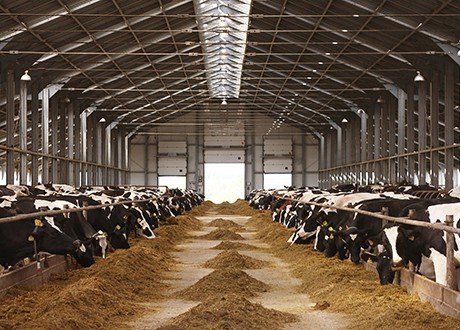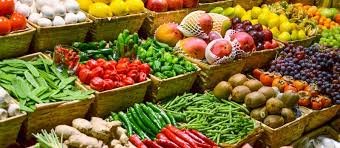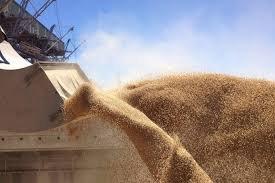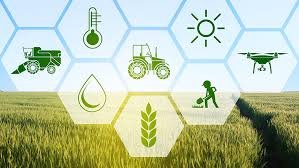Bayer had organised collaborative discussion under the theme “Tomorrow belongs to all of us”. Speakers and participants from around 40 countries attended two days robust panel discussions, talks and interviews on issues and opportunities facing the industry.
Bayer welcomed farmers, academics, leading global industry experts, journalists and other stakeholders for its 2019 Future of Farming Dialogue, to engage in a collaborative discussion on the future of agriculture.
Under the theme “Tomorrow belongs to all of us” the event gathers speakers and participants from around 40 countries for two days of robust panel discussions, talks and interviews on issues and opportunities facing the industry. Topics discussed include the need to find a balance between production of food and preservation of our planet; consumer demands to have a healthy diet with no negative impact on the environment; and the importance of crop protection tools for sustainable agriculture.
“Agriculture needs to feed a growing world without starving the planet”, said Liam Condon, member of the Bayer Board of Management and president of the Crop Science Division. “Breakthrough innovations are needed so that farmers can grow enough food for a growing world population while preserving natural resources.”
“As an agriculture leader, we have the opportunity and responsibility to address the global challenges of climate change, biodiversity loss and food security to help create a better tomorrow for our planet,” Condon added.
Bayer’s ambitious commitments
Condon shared that Bayer is introducing three ambitious commitments to address some of the most pressing challenges our world is currently facing by 2030:
- Reduce the environmental impact of crop protection by 30 percent by developing new technologies that help farmers to scale down crop protection product volumes and enable a more precise application.
- Reduce field greenhouse gases emissions from the most emitting crops systems in the regions Bayer serves by 30 percent.
- Empower 100 million smallholder farmers in developing countries around the world by providing more access to sustainable agricultural solutions.
“By combining agricultural innovation with a business model that has sustainability at its core, we can in line with our purpose contribute to a truly better life”, Condon summarized in his keynote presentation, pointing out that investment in tomorrow’s breakthroughs will require collaboration and engagement with scientists, innovators, regulators, farmers and consumers to build trust and gain societal acceptance. Condon explained that the long-term success of Crop Science lies not in selling more products, but in providing farmers with personalized solutions, enabling them to achieve better harvests more sustainably using less resources such as water, land, inputs and energy.
Today’s progress, tomorrow’s possibilities
Last year Bayer invested 2.3 billion euros in Crop Science R&D on a pro forma basis – more than any other competitor in the industry and this figure is expected to rise to over 25 billion euros accumulated over the next 10 years. Some 7,300 scientists are working in over 35 R&D sites and more than 175 breeding stations to deliver innovation. The division’s combined breeding, biotech, crop protection and environmental science pipelines have the potential to deliver up to 30 billion euros in peak sales, with 17 billion euros expected to come from recent and near-term launches alone.
“Many of today’s innovations are the result of both continuous improvement and disruptive innovation, as we use the power of human ingenuity to drive scientific advances in health and nutrition to improve our world”, said Bob Reiter, Head of Research and Development for the Crop Science Division.
Last month, Bayer further demonstrated its research capabilities with the launch of an innovative fungicide, marketed under the Iblon™ technology brand. Based on the active ingredient is of lucypram, the new wheat fungicide provides excellent disease control across cereal crops to deliver healthier crops and consistently higher yields compared to currently available market standards.
Continued investments in data science and new technologies
Data science and innovative digital tools also enable Bayer to sustainably improve the efficiency of its business operations while, at the same time, empowering farmers to make better decisions about how to grow crops. Combining Bayer’s leading germplasm libraries in corn, soybean, cotton and vegetables, next-generation traits, its strong discovery platform for small molecules and thousands of microbes with the largest seeds performance database, means that Bayer has beyond the current pipeline also the highest innovation potential in agriculture as well.
Last year, Bayer signed more than 60 new collaborations or extensions to existing collaborations. Most recently, the company finalized an agreement with biopharmaceutical research company Arvinas to create a joint venture – newly named Oerth Bio (pronounced “Earth”) – and explore how molecular-degrading proteins found in plants and animals can protect crops against threatening pests and diseases. The outcomes of this partnership not only have significant implications for agriculture but could potentially provide significant benefits to human health through Bayer’s Pharmaceutical Division. As of today, John Dombrosky is named the chief executive officer of Oerth Bio. He previously served as CEO of the AgTech Accelerator, which sourced, formed, and developed emerging big-vision AgTech start-ups.
“We are very proud of our leading R&D pipeline with 75 projects in seed & traits, crop protection and Digital Ag pipelines”, added Reiter. “With hundreds of new hybrids and varieties commercialized annually, we are best-positioned to discover, combine and tailor solutions for growers around the world.”
Increasing productivity with digital farming tools
Today, Bayer provides farmers across millions of acres globally the leading platform in the digital age space. “Through the combination of Bayer’s world-class product and technology portfolio, R&D pipeline, and the integration of robust data insights delivered through our Field View™ platform, the future of agriculture has never been more exciting”, said Sam Eathington, Chief Science Officer at The Climate Corporation. Field View is available in the U.S., Canada, Brazil, Argentina and 15 countries in Europe, including key markets such as Germany, France, Spain, Italy and Ukraine. In 2018, Climate also launched a digital solution for smallholder farmers called FarmRise™, providing key agronomic information to farmers through their mobile devices to help improve their operations.
“Digital farming is enabling individual, personalized solutions, tailored to each farm’s needs: Eathington added. In 2018, Field View was on more than 60 million paid acres globally. This year, the company is currently on track to achieve its target of 90 million paid acres. The platform enables farmers to easily collect and visualize field data, analyse and evaluate crop performance and manage their field variability through customized fertility and seeding plans, to optimize crop productivity. “We see a one-billion-acre opportunity where our digital technologies can be used to positively and sustainably improve the world’s food system”, said Eathington. “Our over-arching goal is to lead in innovation and pioneer the digital transformation to help implement new standards of sustainable agriculture.”
Bayer had organised collaborative discussion under the














